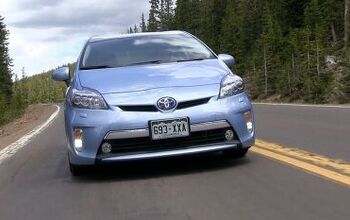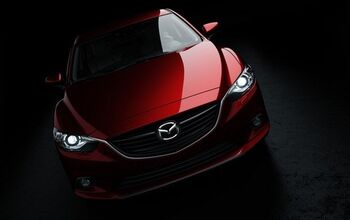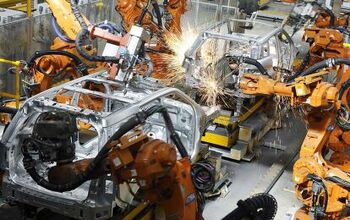Tata to Build Electric Car for Chrysler U.S.
Hot on the heels of the canine-killing conflagration of a model's neighborhood electric vehicle (NEV) in Key West, Business Line reports that Tata Motors is all fired-up on building one of Chrysler's little GEMs in India– and shipping it back to the States. Tata Motors has inked a development deal with Chrysler’s Global Electric Motorcars (GEM) to develop and market an electric version of the Tata Ace for the U.S. of A. "For Tata Motors, the electric Ace that requires no homologation, and attracts fewer regulations as it does not operate on highways and main roads will be a launch pad of sorts in a market where it currently has a no presence." The Indian automaker, favored suitor for Ford's Jaguar and Land Rover brands, expects big things from the little machine. They estimate that they'll export 10k NEVs by year-end, ramping-up to 50k units in '09. The arrangement also represents Chrysler's ongoing committment to foreign outsourcing, which includes the development of a small car for the U.S. market with China's Cherry.
More by Robert Farago


































Comments
Join the conversation
Dangerous Dave "I’m sure it will rank right up there with the Chrysler outboard motor." I'm afraid I don't understand the reference, since Chrysler had a long, profitable, and storied history in marine enagines and boats, starting in 1926. For background information look here: http://www.allpar.com/history/marine.html Some quotes from the link: Charles B. Gorey Jr., who’d been with Chrysler since 1939, and was Vice-President and Group Executive for Diversified Products, added, “After we bought West Bend, we re-engineered and re-styled the outboards to Chrysler standards. We expanded the product offering of boats at Plano, so by 1969, we’re making a complete line of boats targeted to hit every part of the market.” Those plans worked. In the period from 1965 to 1969, Chrysler’s share of both the outboard engine and boat business doubled and then doubled again. In 1968 alone, Chrysler Outboard sales increased 30 percent, while Chrysler Boat sales went up 23 percent. The Marine Division reported a sales increase of 62 percent. During the 1960s and 1970s, at least thirteen different sailboats would be made, using a variety of different hulls, according to the strong sailboat resources, Chrysler Sailing Lizards (their site also has notes from people who worked at the Plano factory, talking about how much extra care Chrysler put into their boats, especially when compared to other makers.) Chrysler Outboard Corporation introduced two new engines in 1971: a 150 horsepower, limited production racing engine and a 130 horsepower, top-of-the-line production model. The outboard engines also included specialty items such as a featherweight 3.6 horsepower fishing engine, several 12 low-profile models from 6 to 12.9 horsepower, 28 models in the family-sized range from 20 to 55 horsepower, and 10 high-performance models, from 70 horsepower to the new 130 horsepower model. Marine and Industrial Products Operations sales set a record in 1972, registering 18 percent above 1971. The Marine Products Group achieved record sales in 1973, with dollar volume 8.2% ahead of 1972; but it would matter little to Chrysler Corporation, as things changed dramatically for the parent corporation. In 1980, Chrysler Boat was sold to Texas Marine International (TMI), a company formed by several ex-Chrysler executives; however that venture ended up failing, in the bad economic times that gripped American companies at the beginning of the Eighties. Texas Marine’s sail, and even some of its power interests, were sold to Wellcraft. The remaining sailboat assets were split among six companies. According to Willem Weertman’s research, Chrysler sold the marine division not because they desired to, but because it was demanded as part of the government’s loan guarantees. ===================== The outboard marine engines were sold a few years later. The inboards dissapeared after the mid 80's although Chrysler entered into an agreement with Mercury Marine to develop several engines, including a two stroke, but could not get it to pass NOx emmisions standards. They also developed the V10 Viper engine for marine use with Ilmor Marine.
Are they going to name it the "Tata Bodacious"? (ducks)